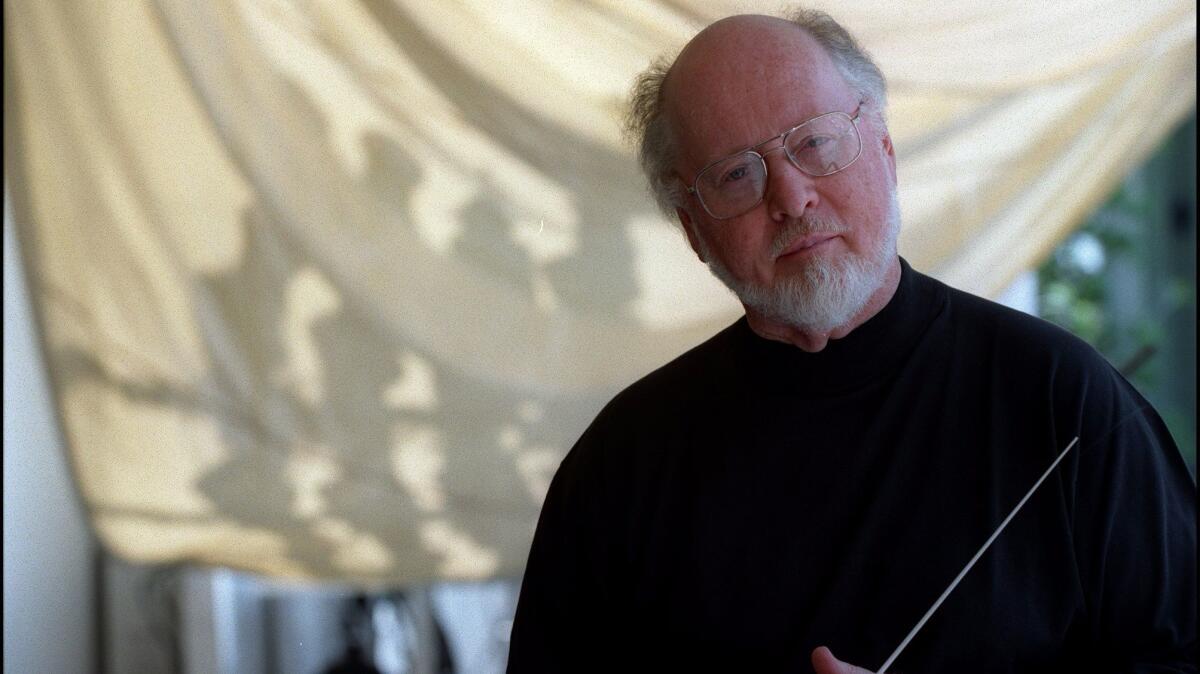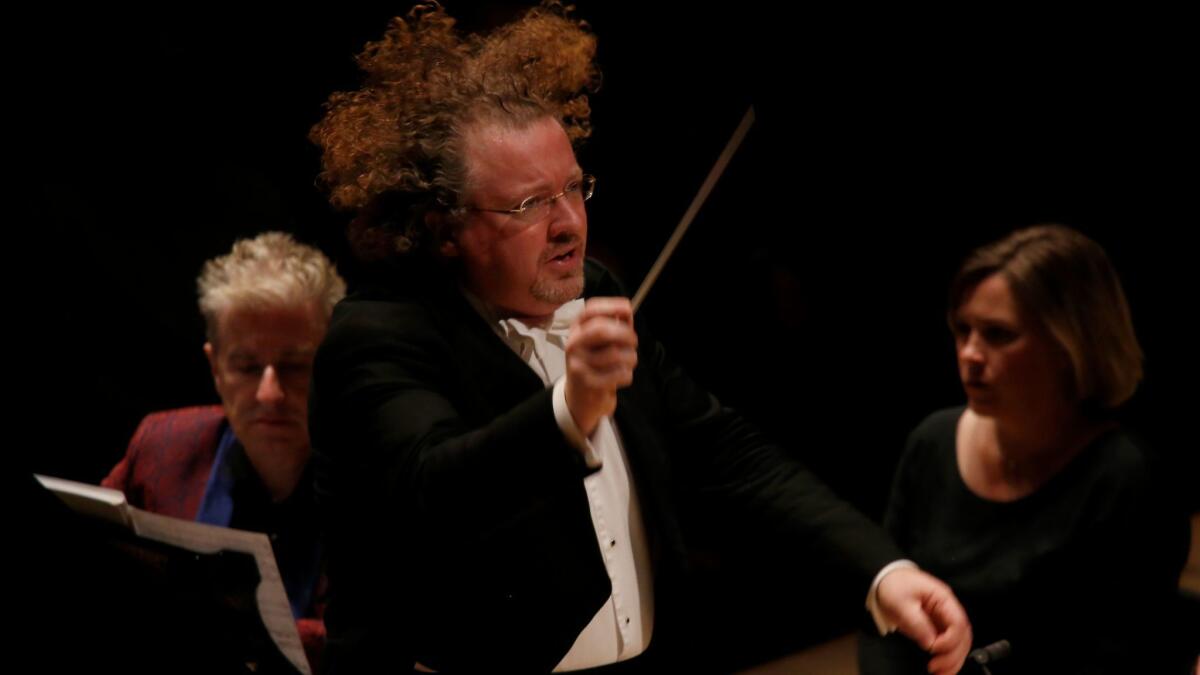Review: Hold the light sabers: This is John Williams off the big screen but still substantial at the Bowl

Stéphane Denève continues his rise in the symphonic ranks, having just been appointed to succeed David Robertson as music director of the St. Louis Symphony, starting in the 2019-2020 season. The Los Angeles Philharmonic already knows Denève’s capabilities since he has been a frequent guest conductor here, and they responded well to him again — from what I could hear — Tuesday night at Hollywood Bowl.
However, the main focus of the evening was a perennial Bowl visitor, a fellow named John Williams who turned 85 in February and could be spotted in the box seats.
No, there were no film scores within earshot; there will be plenty of time for that later in the season. Rather, we heard a very different John Williams, a chameleonic composer of concert music far removed from the world of lightsabers and superheroes.
True, the first piece, “Sound the Bells!,” a brief, tingling, brassy, celebratory prelude written for the Boston Pops in 1993, represented the ceremonial side of Williams familiar to millions from NBC News and the Olympics. But the second, more substantial work was a Violin Concerto written in the mid-1970s as a memorial to his first wife, Barbara, which channels the languages of a number of 20th century violin concertos — mainly Berg’s, but also the second concertos of Bartók and Prokofiev. (The piece was first performed by the St. Louis Symphony; the L.A. Phil first played it in 1983).
It’s a mostly dissonant score, often understandably emotional and troubled, with long lyrical lines in the first two movements and skittering displays for the soloist in the finale. Stylistically, if not chronologically, it fits in with violinist Gil Shaham’s recent explorations of violin concertos written in the 1930s — and he’s an old hand with it, having recorded the piece with Williams in Boston back in 1999. Shaham was right on target, sustaining the lines affectionately, even bringing some mischief to the brief scherzo-like eruption in the second movement.
The rest of the evening was devoted to two-thirds of Respighi’s wonderfully splashy and contemplative Roman trilogy — “The Fountains of Rome” and “The Pines of Rome.” Here, Denève did a splendid job shaping the massive climaxes for maximum impact, lingering soulfully at the close of “Fountains” and the mid-sections of “Pines.” A solo trumpeter sounded his lonely lines in the latter piece from a platform to our left, a nice touch outdoors.

Unfortunately, the reverberation control on the Bowl’s sound system must have been turned up to 10, for the orchestra sounded as if it were playing in a giant cave, with wind soloists blown up larger than life and smudged details everywhere. Respighi’s vivid colors emerged runny, like a painting left out in the rain.
Yes, I realize the climaxes in the “Pines” and “Fountains” are meant to be loud, and that can be — and in spots, was — thrilling, but the amplification crossed the line between loud and deafening. Respighi doesn’t need that kind of help.
SIGN UP for the free Essential Arts & Culture newsletter »
Support coverage of the arts. Share this article.
ALSO
Times art critic Christopher Knight’s latest reviews
Times theater critic Charles McNulty’s latest reviews
Times architecture critic Christopher Hawthorne’s latest columns
Times music critic Mark Swed’s latest review
More to Read
The biggest entertainment stories
Get our big stories about Hollywood, film, television, music, arts, culture and more right in your inbox as soon as they publish.
You may occasionally receive promotional content from the Los Angeles Times.










